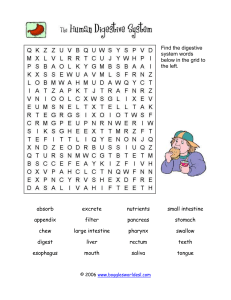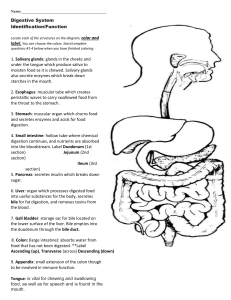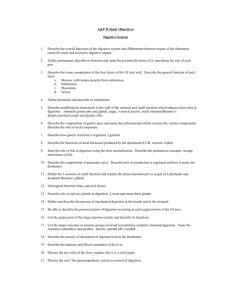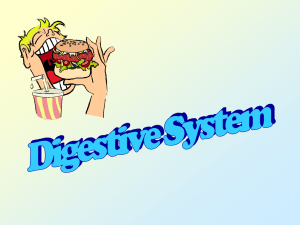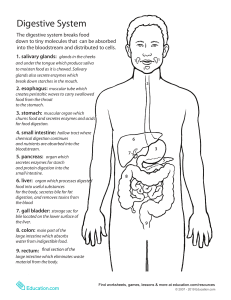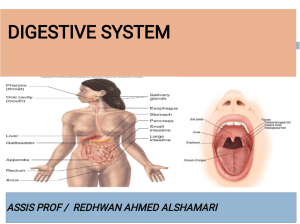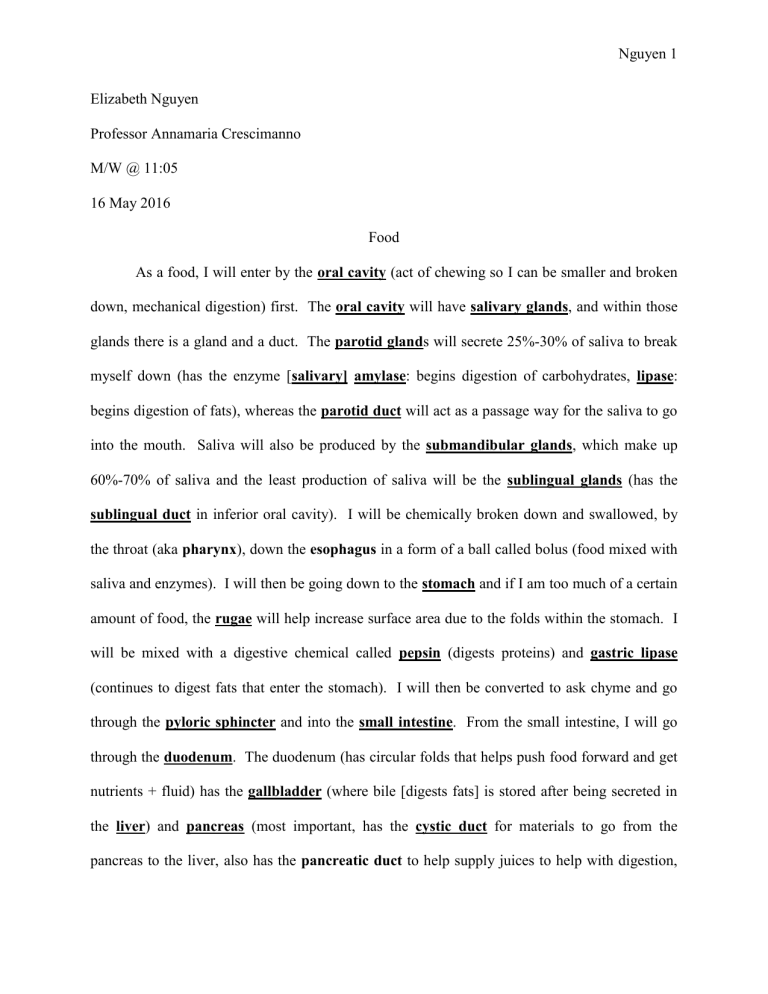
Nguyen 1 Elizabeth Nguyen Professor Annamaria Crescimanno M/W @ 11:05 16 May 2016 Food As a food, I will enter by the oral cavity (act of chewing so I can be smaller and broken down, mechanical digestion) first. The oral cavity will have salivary glands, and within those glands there is a gland and a duct. The parotid glands will secrete 25%-30% of saliva to break myself down (has the enzyme [salivary] amylase: begins digestion of carbohydrates, lipase: begins digestion of fats), whereas the parotid duct will act as a passage way for the saliva to go into the mouth. Saliva will also be produced by the submandibular glands, which make up 60%-70% of saliva and the least production of saliva will be the sublingual glands (has the sublingual duct in inferior oral cavity). I will be chemically broken down and swallowed, by the throat (aka pharynx), down the esophagus in a form of a ball called bolus (food mixed with saliva and enzymes). I will then be going down to the stomach and if I am too much of a certain amount of food, the rugae will help increase surface area due to the folds within the stomach. I will be mixed with a digestive chemical called pepsin (digests proteins) and gastric lipase (continues to digest fats that enter the stomach). I will then be converted to ask chyme and go through the pyloric sphincter and into the small intestine. From the small intestine, I will go through the duodenum. The duodenum (has circular folds that helps push food forward and get nutrients + fluid) has the gallbladder (where bile [digests fats] is stored after being secreted in the liver) and pancreas (most important, has the cystic duct for materials to go from the pancreas to the liver, also has the pancreatic duct to help supply juices to help with digestion, Nguyen 2 secretes pancreatic amylase, lipase, trypsin, & chymotrypsin). After the duodenum, I will go to the jejunum, the second part of the small intestine (primary region for chemical digestion and nutrient absorption) and the last part is the ileum (^ in goblet cells, ^ lubrication = more pey patches). Basically, the small intestine is where I (big particles of food) am broken down into absorbable categories. I will then enter the large intestine (storage + drying unit, absorbs excess fluid). I will go through the large intestine by going through the cecum (has ileocecal valve), ascending colon, transverse colon (taenia coli: help aid in pushing the waste and haustra: helps with contractions), descending colon, sigmoid colon, rectum (bowel movement is triggered = feces), and anal canal(has the internal [involuntary: smooth mm] and external [voluntary: sk mm] anal sphincter). In the end, I will become feces and will be eliminated as waste from the anus.
